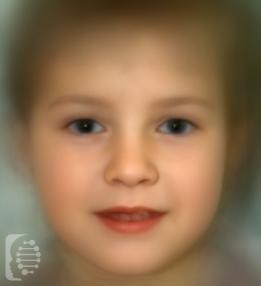What is Holt-Oram syndrome (HOS)?
This rare disease is a genetic syndrome that occurs in 1 in every 100,000 live births.
Symptoms of the syndrome may vary widely, even amongst family members with the same diagnosis. But common features include abnormalities in the upper limb bones, congenital heart defects (over 75% of patients diagnosed with this syndrome will also be diagnosed with a congenital heart defect) and/or coartic conduction defect which affects how muscle contractions in the heart are managed.
This syndrome is also known as:
Atriodigital Dysplasia; Heart-hand Syndrome; HOS1; Upper limb-cardiovascular syndrome-type 1
What gene change causes Holt-Oram syndrome (HOS)?
A mutation in the TBX5 gene causes the syndrome. In around 74% of inherited cases this gene has been found to be the cause. When inherited it is inherited in an autosomal dominant pattern.
In the case of autosomal dominant inheritance, just one parent is the carrier of the gene mutation, and they have a 50% chance of passing it onto each of their children. Syndromes inherited in an autosomal dominant inheritance are caused by just one copy of the gene mutation.
What are the main symptoms of Holt-Oram syndrome (HOS)?
- Upper limb abnormalities: these might include very long thumbs that actually look like fingers (triphalangy), absent thumb bones or absent thumbs in some cases. Symptoms related to the upper limbs might also include an absence of the bones in the forearm or their underdevelopment, the fusing together, or under development of bones in the wrist and thumb. The thumb, forearm, and shoulder may all be affected in terms of their positioning. Severe cases might include a feature known as phocomelia, where the hands are attached to a shoulder due to absent or very short arms. In less severe cases the only presenting syndrome is an abnormal wrist bone.
- Congenital heart defect: the most common defects are atrial septal defect (ASD) and ventral septal defect (VSD). Symptoms of both of these congenital heart defects may vary between individuals.
- Cardiac conduction defects: this might present with or without other congenital heart defects. This usually results in what is known as a heart block and an interruption in the flow of electrical impulses through the heart. Individuals may be affected by this defect in different ways, with some showing no symptoms and others showing more severe symptoms including breathless, blacking out, chest pains or in some cases life-threatening symptoms affecting the heart.
Possible clinical traits/features:
Arrhythmia, Pectus excavatum, Scoliosis, Thoracic scoliosis, Radioulnar synostosis, Ventricular septal defect, Aplasia/Hypoplasia of the radius, Aplasia of the pectoralis major muscle, Aplasia/Hypoplasia of the thumb, Abnormality of the humerus, Abnormality of the carpal bones, Abnormality of the metacarpal bones, Abnormal aortic morphology, Atrial septal defect, Abnormality of the ribs, Abnormality of the sternum, Abnormality of the shoulder, Abnormality of the wrist, Abnormal vertebral morphology, Anomalous pulmonary venous return, Triphalangeal thumb, Absent thumb, Sprengel anomaly, Complete atrioventricular canal defect, Finger syndactyly, Partial duplication of thumb phalanx, Patent ductus arteriosus, Autosomal dominant inheritance, Phocomelia, Hypoplasia of the radius, Hypoplastic left heart.
How is Holt-Oram syndrome (HOS) diagnosed?
To find out if someone has a diagnosis of Holt-Oram syndrome (HOS), it is important to have a consultation and evaluation with a clinical genetic specialist. Specialists may also suggest specific genetic testing or other types of tests to help reach a diagnosis. FDNA’s AI technology can help speed up the diagnostic process by analyzing facial features and other health information.

